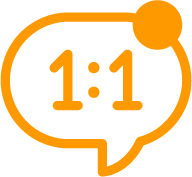Mental Health Assessment Tools Uk Explained In Fewer Than 140 Characte…
페이지 정보
작성자 Andrea 작성일 25-02-19 18:39 조회 280 댓글 0본문
Mental Health Assessment Tools - How Consistent Are Mental Health Symptoms Assessed?
 There are many ways clinicians can assess their patients. They can utilize interviews and questionnaires to determine the intensity, duration and frequency of symptoms.
There are many ways clinicians can assess their patients. They can utilize interviews and questionnaires to determine the intensity, duration and frequency of symptoms.
The landscape of symptom assessment, however, is highly varying. Even within disorder-specific tools the way the patient's experience is evaluated can bias diagnosis.
Interviews and questionnaires
The mental health landscape is filled with questionnaires and interview techniques designed to assess the presence, severity, duration, and frequency of a broad range of symptoms. These tools are used in clinical and research domains to determine the best treatment plan for patients as well as identifying the underlying psychological issues and identifying neurobiological disturbances and socio-environmental effects. There isn't much research on the resemblance of symptoms across the vast assessment tool landscape. This study looked at 110 questionnaires and interviews that were either designed for a specific disorder or took an approach that was cross-disorder (see (15).
The analysis revealed that there was little consistency in the symptomatology being assessed. In reality, only 21% of the symptoms were covered by all assessment tools. The symptom themes covered were anger and irritation; pains &aches and anxiety; fear, and panic; mood, outlook, interest, effort, & motivation; and mood, effort, and motivation.
This lack of consistency highlights a critical need for more standardization in the tools available. This will not only make them easier to utilize, but also provide a precise method to gauge the severity and presence of symptoms.
Additionally the symptom categories were constructed based on a list pre-defined symptoms that were compiled from different diagnostic and classification systems like DSM-5 or ICD-11. This could lead to biases in the assessment of patients, as certain symptoms may be considered more important or less significant than others. For example high fever and fatigue are both common signs of illness, but they are not necessarily indicative of the same root reason, such as an infection or injury.
The majority of the 126 assessment tools were rating scales. Most of them were self-rated questionnaires. This type of rating scale allows patients to sort complicated emotions and feelings into simple responses that are easy to measure. This technique is particularly useful for screening because it allows doctors to identify people who are experiencing significant stress, even when their distress does not meet a threshold for diagnosis.
Online Platforms
Online platforms are increasingly popular to manage and deliver of psychological and psychosocial services. Some of these platforms permit the gathering of data in a secure and private setting, while other platforms let therapists create and conduct interactive activities using smartphones or tablet. These digital tools can be a valuable source for assessing the mental health of patients, particularly when used alongside traditional assessments.
Recent research has shown that digital diagnostic technologies are not always accurate. The tools should be evaluated within the context of their intended use. Using case-control designs for such assessments may provide a distorted picture of the technology's effectiveness and should be avoided in future studies. In addition, the results of this review suggest that it could be beneficial to switch away from the pen-and-paper-based questionnaires currently in use to develop more advanced digital tools that provide a more accurate and comprehensive assessments of psychiatric disorders.
These innovative online tools can help improve the efficiency of a doctor's practice by reducing the time it takes to prepare and deliver assessments of mental health to their clients. In addition they can aid in conducting regular assessments that require repeated measurements over a long period of time.
A client might, for example, complete daily reflections of their emotions via an online platform. The counsellor can then go through these reflections and see how they align with the treatment plan of the patient. These online tools can collect data that can be used to alter treatment and track the progress of a client over time.
Additionally, these new digital tools can improve the quality of therapeutic interactions by allowing doctors to spend more time with their patients and less time documenting sessions. This is particularly beneficial to those who work with vulnerable populations, such as children and teens who suffer from mental illness. In addition these online tools could be helpful in addressing the stigma surrounding mental health, by offering the security and privacy needed to diagnose and assess mental health Assesment health issues.
Paper-Based Assessments
While interviews and questionnaires are a valuable tool for assessing mental health However, they can also pose a problem. They can lead patients to have inconsistent interpretations of their symptoms and create an incoherent impression of the underlying cause. They often fail to consider the social and environmental factors that can contribute to mental disorders. They can also be biased towards certain types of symptom themes. This is particularly relevant for psychiatric disorders such as depression, bipolar disorder and anxiety. In this regard it is essential to utilize the mental health screening tool that is designed to identify risk factors.
There are currently a variety of different paper-based assessments that can be used to evaluate mental health. There are a number of assessments that are paper-based, including the Symptom Checklist for Depression and the Eating Disorder Inventory-Revised. These tools are simple to use, and help clinicians get an understanding of the problem. These tools can also be used by caregivers, family members and patients.
The Global Mental Health Assessment Tool Primary Care Version (GMHAT/PC) is another tool that is utilized by clinicians. It is a computerised assessment instrument for clinical practice that is used by general practitioners to discover and evaluate psychiatric issues. It can also generate a computer diagnosis and a referral letter. It has been established that this improves the accuracy of diagnoses for psychiatric disorders and decreases the time required to schedule an appointment.
The GMHAT/PC could be an excellent resource for the clinicians and patients. It provides information about the spectrum of psychiatric disorders and their symptoms. It is easy to use and can be completed in a few minutes. It also contains suggestions for managing symptoms and warning indicators of suicide. The GMHAT/PC can also be utilized by family members to assist with the treatment of their loved ones.
The vast majority (90 90 percent) of assessment and diagnosis tools for psychiatric conditions are specific to a particular disorder. This is due to the fact that they are based on classification systems like the Diagnostic and Statistical Manual of emergency room mental health assessment Disorders and the International Classification of Diseases that use pre-defined patterns of symptom criteria to define a disorder. However, the large amount of overlap in the assessment of symptoms among the tools for specific disorders suggests that these instruments are not providing a comprehensive understanding of the underlying mental health assessment for ptsd health issues.
 Stigma Worksheet
Stigma Worksheet
Stigma refers to the set of attitudes, beliefs, and behaviors that create and perpetuate prejudice and discrimination against people suffering from mental health issues. Its effects extend beyond the personal experience of stigma, and include the social structures of society, such as laws and regulations; prejudiced beliefs and attitudes of health care professionals; and the discriminatory practices of social organizations, agencies and institutions. This also includes the social perceptions of people suffering from mental disorders that encourage self-stigma and prevent them from seeking treatment or assistance from others.
There are numerous tools that can be used to treat and diagnose mental disorders. These include interviews, symptom-based questionnaires and structured clinical assessments. However, a lot of these tools are designed to be used in research and require the highest level of expertise to make use of. They are also frequently specific to disorders, and cover only the symptoms of a narrow range.
The GMHAT/PC, on other on the other hand, is a clinical evaluation tool that is used by general practitioners in their routine practice. It can detect common psychiatric disorders, while ignoring more serious ones. It also automatically produces a referral to local community mental health services.
The choice of language is another important consideration when using tools for mental health assessment. Some psychiatric terms are considered to be a source of stigma, such as "commit" or "commit suicide." Others trigger negative thoughts and feelings such as embarrassment and shame and may create myths about mental illness. By choosing words that are less stigmatizing, you can improve the validity of an assessment and encourage patients to give honest answers.
Mental health disorders can be stigmatized, but they can be overcome by positive anti-stigma initiatives by individuals, communities and organizations. Informing others about mental health assessment private illnesses and avoiding insensitive stereotypes when discussing them, and reporting instances of stigma in the media can all help in reducing the negative impact of stigma. Small changes can are significant such as changing the language on health posters that are displayed in public spaces to avoid a stigmatizing tone and educating children about stress and how to deal with it.
 There are many ways clinicians can assess their patients. They can utilize interviews and questionnaires to determine the intensity, duration and frequency of symptoms.
There are many ways clinicians can assess their patients. They can utilize interviews and questionnaires to determine the intensity, duration and frequency of symptoms.The landscape of symptom assessment, however, is highly varying. Even within disorder-specific tools the way the patient's experience is evaluated can bias diagnosis.
Interviews and questionnaires
The mental health landscape is filled with questionnaires and interview techniques designed to assess the presence, severity, duration, and frequency of a broad range of symptoms. These tools are used in clinical and research domains to determine the best treatment plan for patients as well as identifying the underlying psychological issues and identifying neurobiological disturbances and socio-environmental effects. There isn't much research on the resemblance of symptoms across the vast assessment tool landscape. This study looked at 110 questionnaires and interviews that were either designed for a specific disorder or took an approach that was cross-disorder (see (15).
The analysis revealed that there was little consistency in the symptomatology being assessed. In reality, only 21% of the symptoms were covered by all assessment tools. The symptom themes covered were anger and irritation; pains &aches and anxiety; fear, and panic; mood, outlook, interest, effort, & motivation; and mood, effort, and motivation.
This lack of consistency highlights a critical need for more standardization in the tools available. This will not only make them easier to utilize, but also provide a precise method to gauge the severity and presence of symptoms.
Additionally the symptom categories were constructed based on a list pre-defined symptoms that were compiled from different diagnostic and classification systems like DSM-5 or ICD-11. This could lead to biases in the assessment of patients, as certain symptoms may be considered more important or less significant than others. For example high fever and fatigue are both common signs of illness, but they are not necessarily indicative of the same root reason, such as an infection or injury.
The majority of the 126 assessment tools were rating scales. Most of them were self-rated questionnaires. This type of rating scale allows patients to sort complicated emotions and feelings into simple responses that are easy to measure. This technique is particularly useful for screening because it allows doctors to identify people who are experiencing significant stress, even when their distress does not meet a threshold for diagnosis.
Online Platforms
Online platforms are increasingly popular to manage and deliver of psychological and psychosocial services. Some of these platforms permit the gathering of data in a secure and private setting, while other platforms let therapists create and conduct interactive activities using smartphones or tablet. These digital tools can be a valuable source for assessing the mental health of patients, particularly when used alongside traditional assessments.
Recent research has shown that digital diagnostic technologies are not always accurate. The tools should be evaluated within the context of their intended use. Using case-control designs for such assessments may provide a distorted picture of the technology's effectiveness and should be avoided in future studies. In addition, the results of this review suggest that it could be beneficial to switch away from the pen-and-paper-based questionnaires currently in use to develop more advanced digital tools that provide a more accurate and comprehensive assessments of psychiatric disorders.
These innovative online tools can help improve the efficiency of a doctor's practice by reducing the time it takes to prepare and deliver assessments of mental health to their clients. In addition they can aid in conducting regular assessments that require repeated measurements over a long period of time.
A client might, for example, complete daily reflections of their emotions via an online platform. The counsellor can then go through these reflections and see how they align with the treatment plan of the patient. These online tools can collect data that can be used to alter treatment and track the progress of a client over time.
Additionally, these new digital tools can improve the quality of therapeutic interactions by allowing doctors to spend more time with their patients and less time documenting sessions. This is particularly beneficial to those who work with vulnerable populations, such as children and teens who suffer from mental illness. In addition these online tools could be helpful in addressing the stigma surrounding mental health, by offering the security and privacy needed to diagnose and assess mental health Assesment health issues.
Paper-Based Assessments
While interviews and questionnaires are a valuable tool for assessing mental health However, they can also pose a problem. They can lead patients to have inconsistent interpretations of their symptoms and create an incoherent impression of the underlying cause. They often fail to consider the social and environmental factors that can contribute to mental disorders. They can also be biased towards certain types of symptom themes. This is particularly relevant for psychiatric disorders such as depression, bipolar disorder and anxiety. In this regard it is essential to utilize the mental health screening tool that is designed to identify risk factors.
There are currently a variety of different paper-based assessments that can be used to evaluate mental health. There are a number of assessments that are paper-based, including the Symptom Checklist for Depression and the Eating Disorder Inventory-Revised. These tools are simple to use, and help clinicians get an understanding of the problem. These tools can also be used by caregivers, family members and patients.
The Global Mental Health Assessment Tool Primary Care Version (GMHAT/PC) is another tool that is utilized by clinicians. It is a computerised assessment instrument for clinical practice that is used by general practitioners to discover and evaluate psychiatric issues. It can also generate a computer diagnosis and a referral letter. It has been established that this improves the accuracy of diagnoses for psychiatric disorders and decreases the time required to schedule an appointment.
The GMHAT/PC could be an excellent resource for the clinicians and patients. It provides information about the spectrum of psychiatric disorders and their symptoms. It is easy to use and can be completed in a few minutes. It also contains suggestions for managing symptoms and warning indicators of suicide. The GMHAT/PC can also be utilized by family members to assist with the treatment of their loved ones.
The vast majority (90 90 percent) of assessment and diagnosis tools for psychiatric conditions are specific to a particular disorder. This is due to the fact that they are based on classification systems like the Diagnostic and Statistical Manual of emergency room mental health assessment Disorders and the International Classification of Diseases that use pre-defined patterns of symptom criteria to define a disorder. However, the large amount of overlap in the assessment of symptoms among the tools for specific disorders suggests that these instruments are not providing a comprehensive understanding of the underlying mental health assessment for ptsd health issues.
 Stigma Worksheet
Stigma WorksheetStigma refers to the set of attitudes, beliefs, and behaviors that create and perpetuate prejudice and discrimination against people suffering from mental health issues. Its effects extend beyond the personal experience of stigma, and include the social structures of society, such as laws and regulations; prejudiced beliefs and attitudes of health care professionals; and the discriminatory practices of social organizations, agencies and institutions. This also includes the social perceptions of people suffering from mental disorders that encourage self-stigma and prevent them from seeking treatment or assistance from others.
There are numerous tools that can be used to treat and diagnose mental disorders. These include interviews, symptom-based questionnaires and structured clinical assessments. However, a lot of these tools are designed to be used in research and require the highest level of expertise to make use of. They are also frequently specific to disorders, and cover only the symptoms of a narrow range.
The GMHAT/PC, on other on the other hand, is a clinical evaluation tool that is used by general practitioners in their routine practice. It can detect common psychiatric disorders, while ignoring more serious ones. It also automatically produces a referral to local community mental health services.
The choice of language is another important consideration when using tools for mental health assessment. Some psychiatric terms are considered to be a source of stigma, such as "commit" or "commit suicide." Others trigger negative thoughts and feelings such as embarrassment and shame and may create myths about mental illness. By choosing words that are less stigmatizing, you can improve the validity of an assessment and encourage patients to give honest answers.
Mental health disorders can be stigmatized, but they can be overcome by positive anti-stigma initiatives by individuals, communities and organizations. Informing others about mental health assessment private illnesses and avoiding insensitive stereotypes when discussing them, and reporting instances of stigma in the media can all help in reducing the negative impact of stigma. Small changes can are significant such as changing the language on health posters that are displayed in public spaces to avoid a stigmatizing tone and educating children about stress and how to deal with it.









